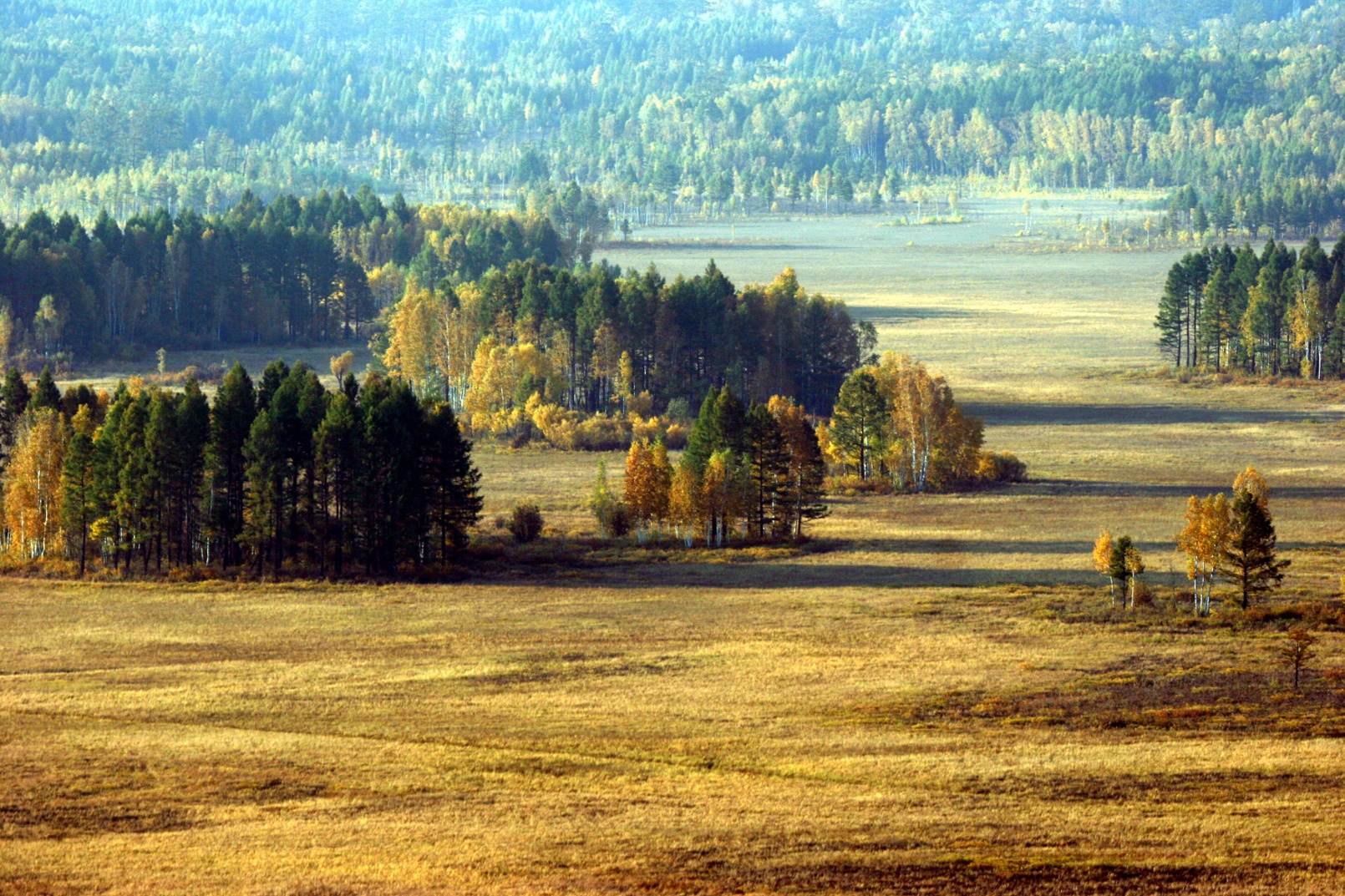
Deutsch-Chinesische Enzyklopädie, 德汉百科
 Heilongjiang Sheng-HL
Heilongjiang Sheng-HL

一眼万年:黑龙江文明探源游径
十八站遗址(旧石器时代)—碧水北山洞穴遗址(旧石器时代)—小南山遗址(新石器时代)—老龙头遗址(西周)—小四方山城址(战国)—凤林城址(汉魏)—雁窝岛城址(隋)—渤海国上京龙泉府遗址(唐渤海国)—塔子城址(辽)—蒲与路故城遗址(金)—桃温万户府故城(元)—莽吉塔站故城(明)—瑷珲新城遗址(清)
该线路选取黑龙江省从旧石器时代到清代各时期遗存13处,按照历史沿革顺序进行梳理,旨在展示黑龙江从旧石器时代到清代未曾断代的丰富文物资源。

东北丝绸之路:海西东水陆城站游径
阿城区金上京会宁府遗址—汤原县桃温万户府故城—桦川县瓦里霍吞城址—绥滨县奥里米城址—同江市图斯克城址—同江市勤得利古城—抚远市莽吉塔站故城
该线路依据明代海西东水陆城站设立。海西东水陆城站是明清时期通往亚洲东北极边,到库页岛及日本北海道的商贸要道,全长2500公里,是明代黑龙江地区最长的驿道,被誉为“东北丝绸之路”。驿路从海西底失卜站出发,沿松花江、黑龙江下游两岸向东北而行,至终点满泾站,共经10城45站,其中黑龙江省境内33城站。该线路选取保护状况较好的6城1站。

轨“记”巡礼:中东铁路建筑游径
昂昂溪中东铁路建筑群—安达市中东铁路建筑群—哈尔滨市中东铁路建筑群—尚志市一面坡镇中东铁路建筑—海林市横道河子镇中东铁路建筑群—绥芬河市中东铁路建筑群
中东铁路是东北铁路一百多年沧桑巨变的缩影,中东铁路建筑则是中东铁路沿线保留下来的珍贵文物建筑,这些建筑结构独特、造型精美,是黑龙江省重要的近现代史迹。
Quelle: 来源:中国文化报 编辑:周祎 版权所有:中华人民共和国文化和旅游部 地址:东城区朝阳门北大街10号 邮编:100020



鄂温克族(俄语:Эвенки,旧称通古斯或索伦)是东北亚地区的一个民族,主要居住于俄罗斯西伯利亚以及中国内蒙古和黑龙江两省区,蒙古国也有少量分布。中国鄂温克人主要信仰萨满教,俄罗斯鄂温克人除少数信仰萨满教外,主要为东正教信徒。鄂温克人讲鄂温克语,属于阿尔泰语系—满-通古斯语族—通古斯语支,[1] 无文字。历史上曾使用满文。[2]
Die Ewenken (auch: Evenki; alte Bezeichnung: Tungusen) sind ein aus zahlreichen regionalen Gruppen und Clans bestehendes indigenes Volk. Ewenkische Gruppen leben über ein Gebiet verstreut, das größer ist als Europa. Außer in der Mehrheit der Regionen Sibiriens gibt es Ewenken in der Mongolei und in der Volksrepublik China (Rentier-Ewenken, Solonen, Bargu-Ewenken).
エヴェンキ(ロシア語 Эвенки(Evenki), 中国語 鄂温克族(拼音: ))は、ツングース系民族の一つで、主にロシア国内のクラスノヤルスク地方にある旧エヴェンキ自治管区地域に居住する。ほか、ロシア国内ではサハ共和国などにも居住し、中国国内でも興安嶺山脈周辺の内モンゴル自治区エヴェンキ族自治旗・黒竜江省などに居住している。エベンキとも表記される。
The Evenks (also spelled Ewenki or Evenki) (autonym: Эвэнкил Evenkil; Russian: Эвенки Evenki; Chinese: 鄂温克族 Èwēnkè Zú; formerly known as Tungus or Tunguz; Mongolian: Хамниган Khamnigan) or Aiwenji (Chinese: 埃文基族 āiwénjī Zú) are a Tungusic people of Northern Asia. In Russia, the Evenks are recognised as one of the indigenous peoples of the Russian North, with a population of 38,396 (2010 census). In China, the Evenki form one of the 56 ethnic groups officially recognised by the People's Republic of China, with a population of 30,875 (2010 census).[2] There are 537 Evenks, called Khamnigan in Mongolian, in Mongolia (2015 census).[3]
Les Evenks ou Ewenkis (russe : эвенков ; chinois simplifié : 鄂温克族 ; chinois traditionnel : 鄂溫克族 ; pinyin : ) constituent l'un des peuples Toungouses de Sibérie (Russie et Nord-Est de la Chine). Leur langue est une langue toungouse, l'evenki. Les Evenks forment au total une population d'environ 70 000 individus. Les Evenks ne pratiquent pas tous la même religion ; certains pratiquent le lamaïsme, d'autres sont orthodoxes et d'autres encore restent dans un système animiste articulé autour du chamanisme. Ils constituent également l'une des nationalités de Chine où, selon le recensement de 2000, ils seraient autour de 30 000.
Le recensement de 2010 a dénombré 38 396 Evenks en Russie1 contre 30 875 en Chine.
Gli Evenchi o Ėvenki[2][3] (russo Эвенки), in italiano chiamati Tungusi almeno fino al 1945, sono un popolo nomade della Siberia e fanno parte dei 56 gruppi etnici riconosciuti ufficialmente dalla Repubblica popolare cinese.
La etnia evenki o ewenki (chino: 鄂温克族; pinyin: Èwēnkè zú), antiguamente denominados tungús o tungúes, son un pueblo indígena originario de la zona norte de Siberia en Rusia. Los evenki forman una de las 56 minorías étnicas oficialmente reconocidas por el gobierno de la República Popular China.


 Architecture
Architecture
 Beijing Shi-BJ
Beijing Shi-BJ
 China
China
 Chinesische Mauer
Chinesische Mauer
 Gansu Sheng-GS
Gansu Sheng-GS
 Hebei Sheng-HE
Hebei Sheng-HE
 Heilongjiang Sheng-HL
Heilongjiang Sheng-HL
 Henan Sheng-HA
Henan Sheng-HA
 Jilin Sheng-JL
Jilin Sheng-JL
 Liaoning Sheng-LN
Liaoning Sheng-LN
 Nei Mongol Zizhiqu-NM
Nei Mongol Zizhiqu-NM
 Ningxia Huizu Zizhiqu-NX
Ningxia Huizu Zizhiqu-NX
 Qinghai Sheng-QH
Qinghai Sheng-QH
 Shaanxi Sheng-SN
Shaanxi Sheng-SN
 Shandong Sheng-SD
Shandong Sheng-SD
 Shanxi Sheng-SX
Shanxi Sheng-SX
 Tianjin Shi-TJ
Tianjin Shi-TJ

 World Heritage
World Heritage
 Xinjiang Uygur Zizhiqu-XJ
Xinjiang Uygur Zizhiqu-XJ

 Civilization
Civilization






长城(Great Wall),又称万里长城,是中国古代的军事防御工程,是一道高大、坚固而连绵不断的长垣,用以限隔敌骑的行动。长城不是一道单纯孤立的城墙,而是以城墙为主体,同大量的城、障、亭、标相结合的防御体系。
长城修筑的历史可上溯到西周时期,发生在首都镐京(今陕西西安)的著名的典故“烽火戏诸侯”就源于此。春秋战国时期列国争霸,互相防守,长城修筑进入第一个高潮,但此时修筑的长度都比较短。秦灭六国统一天下后,秦始皇连接和修缮战国长城,始有万里长城之称 。明朝是最后一个大修长城的朝代,今天人们所看到的长城多是此时修筑。
长城资源主要分布在河北、北京、天津、山西、陕西、甘肃、内蒙古、黑龙江、吉林、辽宁、山东、河南、青海、宁夏、新疆等15个省区市。期中陕西省是中国长城资源最为丰富的省份,境内长城长度达1838千米 。根据文物和测绘部门的全国性长城资源调查结果,明长城总长度为8851.8千米,秦汉及早期长城超过1万千米,总长超过2.1万千米。
1961年3月4日,长城被国务院公布为第一批全国重点文物保护单位 。1987年12月,长城被列入世界文化遗产。
长城(蒙古语:ᠴᠠᠭᠠᠨ
ᠬᠡᠷᠡᠮ,西里尔字母:Цагаан хэрэм;满语:ᡧᠠᠩᡤᡳᠶᠠᠨ
ᠵᠠᠰᡝ,穆麟德转写:šanggiyan jase),是中国古代为抵御不同时期塞北游牧帝国或部落联盟的侵袭,在西北方所修筑规模浩大的隔离墙或军事工程的统称。长城虽为城墙,但不做为完全单一条绝对隔离线,而是多层检查通行的边防口,实际上还主动发挥指导经贸交流的两手策略[1][2],东西段与前后关卡加总起来可绵延上万华里(约4500-6000千公尺),因此又称作万里长城。
现存的长城遗迹主要为始建于14世纪的明长城,西起嘉峪关,东至虎山长城,长城遗址跨越吉林、辽宁、北京、天津、山西、陕西、宁夏、甘肃等15个省市自治区,总计有43,721处长城遗产,长城也是自人类文明以来最巨大的建筑物。1961年起,一批长城重要点段被陆续公布为全国重点文物保护单位。1987年,长城被联合国教科文组织列为世界文化遗产,该遗产目前不仅包含上述15个省、市、自治区境内的长城,还额外包括了湖南和四川境内的苗疆长城(南长城)等[3]。
Die Chinesische Mauer ist eine Schutzanlage zur Grenzsicherung, die während der Ming-Dynastie (1368–1644) im Norden Chinas errichtet wurde.[1][2] Der chinesische Ausdruck ist 萬里長城 / 万里长城, Wànlǐ Chángchéng – „10.000-Li-Mauer, besser: zehntausende Li lange (Schutz-)Mauer“ oder kurz 長城 / 长城, Chángchéng, Jyutping Coeng4sing4anhören (kantonesisch)ⓘ/? – „Lange Mauer“, auch mit „Große Mauer“ (vgl. Englisch: „Great Wall“) übersetzt.
Die Anlage ist in Abschnitten zu unterschiedlichen Zeiten mit unterschiedlichen Bautechniken in der Ming-Dynastie gebaut worden.[3][4] Breite, begehbare Mauern im Norden Pekings aus der zweiten Hälfte des 16. Jahrhunderts bilden das ikonische Bild der Chinesischen Mauer und sind zu einem Sinnbild Chinas geworden. In anderen Abschnitten, besonders im Westen, ist die Befestigung oftmals aus festgeklopftem Lehm erbaut worden.[2] Die Länge der Schutzanlage wird mit 6260 Kilometern angegeben.[5]
万里の長城(ばんりのちょうじょう、中国語: 万里长城、拼音: Wànlǐ Chángchéng ワンリー ツァンツェン、モンゴル語: Цагаан хэрэм、ᠴᠠᠭᠠᠨ
ᠬᠡᠷᠡᠮ、満州語: ᡧᠠᠩᡤᡞᠶᠠᠨ
ᠵᠠᠰᡝ[1]、šanggiyan jase)は、中華人民共和国に存在する城壁の遺跡である。ユネスコの世界遺産(文化遺産)に登録されており、2007年には新・世界七不思議にも選ばれている[2]。中国には他にも長く連なった城壁、いわゆる長城は存在するが、万里の長城が規模的にも歴史的にも圧倒的に巨大なため、単に長城と言えば万里の長城のことを指す。現存する人工壁の延長は6,259.6kmである[3]。
匈奴のような北方の異民族が侵攻してくるのを迎撃するために、秦代の紀元前214年に始皇帝によって建設された。長城は始皇帝によって建設されたと一般には考えられているが、実際にはその後いくつかの王朝によって修築と移転が繰り返され、現存の「万里の長城」の大部分は明代に作られたものである。この現存する明代の長城線は秦代に比べて遥かに南へ後退している。
よく「農耕民族と遊牧民族の境界線」と言われるが、秦・漢代の長城は草原の中に建っているところが多い。これは両王朝が遊牧民族に対し優位に立ち、勢力圏を可能な限り北方へと広げようとしたためである。それに対し明代の長城は防衛を容易にするために中国本土に近いところに建設されており、とくに首都北京付近においてその傾向が強く、北京付近の長城は北京から100kmも離れていない稜線上に設けられている。万里の長城は南北両勢力の境界線として機能したが、北方の遊牧民族も南方の農耕民族もお互いの物産を必要としており、長城沿いには交易所がいくつも設けられ、盛んに取引が行われていた。交易はいつもうまくいっていたわけではなく、北方民族側の思うとおりにいかない場合もあった。その交易を有利にするための威嚇として、明の力が弱い時期に北方民族は長城を越えて侵入を繰り返していた。また、長城は観念上においても両勢力の境界線として機能し、たとえば中原の諸王朝が北方遊牧民族を指す場合、「塞外」(塞は城塞の意味で、この場合万里の長城を指す)という言葉が用いられることも多かった。
万里の長城は建設後常に維持・利用されていたわけではなく、積極的に長城を建設・維持する王朝と、まったく長城防衛を行わない王朝の2種が存在し、各王朝の防衛戦略によって長城の位置も大きく変動している。始皇帝による建設以後においては、秦・前漢・北魏・北斉・隋・金・明は大規模な長城建設を行ったのに対し、後漢・魏・晋・五胡十六国の諸王朝・唐・五代の各王朝・宋・元・清は長城防衛をほとんど、あるいはまったく行わなかった。長城の建設位置に関しても、秦・前漢・金は中原から遠く離れた草原地帯に長城を建設したのに対し、北魏・北斉・明は中原に近い山岳地帯を中心に長城を建設した。
なお、「宇宙から肉眼で見える唯一の建造物」と言われ、中華人民共和国の教科書にも掲載されていたが、実際には幅が細い上、周囲の色と区別が付きにくいため、視認することは出来ない。2003年に中国初の有人宇宙船「神舟5号」に搭乗した宇宙飛行士である楊利偉が、「万里の長城は見えなかった」と証言したため、中華人民共和国の教科書から、この節は正式に削除された[4]。2004年には、中国系アメリカ人の宇宙飛行士であるリロイ・チャオが、国際宇宙ステーション(ISS)より180ミリ望遠レンズを付けたデジタルカメラで「万里の長城」を写真撮影することに成功したが、肉眼では見えなかったと証言している[5]。
The Great Wall of China is a series of fortifications made of stone, brick, tamped earth, wood, and other materials, generally built along an east-to-west line across the historical northern borders of China to protect the Chinese states and empires against the raids and invasions of the various nomadic groups of the Eurasian Steppe with an eye to expansion. Several walls were being built as early as the 7th century BC;[2] these, later joined together and made bigger and stronger, are collectively referred to as the Great Wall.[3] Especially famous is the wall built in 220–206 BC by Qin Shi Huang, the first Emperor of China. Little of that wall remains. The Great Wall has been rebuilt, maintained, and enhanced over various dynasties; the majority of the existing wall is from the Ming Dynasty (1368–1644).
Apart from defense, other purposes of the Great Wall have included border controls, allowing the imposition of duties on goods transported along the Silk Road, regulation or encouragement of trade and the control of immigration and emigration. Furthermore, the defensive characteristics of the Great Wall were enhanced by the construction of watch towers, troop barracks, garrison stations, signaling capabilities through the means of smoke or fire, and the fact that the path of the Great Wall also served as a transportation corridor.
The frontier walls built by different dynasties have multiple courses. Collectively, they stretch from Dandong in the east to Lop Lake in the west, from present-day Sino-Russian border in the north to Qinghai in the south; along an arc that roughly delineates the edge of Mongolian steppe. A comprehensive archaeological survey, using advanced technologies, has concluded that the walls built by the Ming dynasty measure 8,850 km (5,500 mi).[4] This is made up of 6,259 km (3,889 mi) sections of actual wall, 359 km (223 mi) of trenches and 2,232 km (1,387 mi) of natural defensive barriers such as hills and rivers.[4] Another archaeological survey found that the entire wall with all of its branches measures out to be 21,196 km (13,171 mi).[5] Today, the Great Wall is generally recognized as one of the most impressive architectural feats in history.[6]
La Grande Muraille1 (chinois simplifié : 长城 ; chinois traditionnel : 長城 ; pinyin : Chángchéng ; Wade : Ch'ang²ch'eng² ; littéralement « la longue muraille »), aussi appelé « Les Grandes Murailles » est un ensemble de fortifications militaires chinoises construites, détruites et reconstruites en plusieurs fois et à plusieurs endroits entre le IIIe siècle av. J.-C. et le XVIIe siècle pour marquer et défendre la frontière nord de la Chine. C'est la structure architecturale la plus importante jamais construite par l’Homme à la fois en longueur, en surface et en masse.
Populairement, on désigne sous le nom de « Grande Muraille » la partie construite durant la dynastie Ming qui part de Shanhaiguan sur le territoire de la ville de Qinhuangdao dans la province du Hebei à l’est pour arriver à Jiayuguan dans la province du Gansu à l’ouest. Sa longueur varie selon les sources. Selon un rapport de 1990, la longueur totale des murs serait de 6 259,6 km2. En raison de sa longueur, elle est surnommée en chinois « La longue muraille de dix mille li » (chinois simplifié : 万里长城 ; chinois traditionnel : 萬里長城 ; pinyin : Wànlǐ Chángchéng ; Wade : Wan⁴li³ Ch'ang²ch'eng²), le li étant une ancienne unité de longueur chinoise et dix mille symbolisant l’infini en chinois. Ce surnom peut cependant être pris dans son sens littéral par approximation, 6 700 km faisant 11 632 li dans sa valeur généralement considérée de 576 m ou 13 400 li dans sa valeur actuelle d’exactement 500 m. En moyenne, la muraille mesure 6 à 7 m de hauteur, et 4 à 5 m de largeur. En avril 2009, l'Administration d'État chargée du patrimoine culturel, ayant utilisé des technologies de mesure plus récentes3, révise cette mesure et déclare une longueur de 8 851,8 km dont 6 259,6 km de murs, 359,7 km de tranchées et 2 232,5 km de barrières naturelles, telles des montagnes ou des rivières. Le même service a publié en juin 2012 une mise à jour de son étude, et estime désormais à 21 196,18 km la longueur totale de la Grande Muraille4,5. Cette nouvelle estimation prend en compte des parties actuellement détruites.
Depuis 1987, la Grande Muraille est classée au patrimoine mondial de l'UNESCO sous le numéro 4386. En 2015, le constat est fait d'une nette dégradation de l'état général de la Grande Muraille due principalement aux conditions climatiques et aux activités humaines, et de la nécessité d'intervenir rapidement pour assurer sa sauvegarde7.
La Grande Muraglia (長城T, 长城S, ChángchéngP), nata come Wanli changcheng (萬里長城T, 万里长城S, Wànlǐ ChángchéngP, Grande muraglia di 10.000 Lǐ[1]), consiste in una lunghissima serie di mura situate nell'odierna Cina.
Costruita a partire dal 215 a.C. circa per volere dell'imperatore Qin Shi Huang (秦始皇S, Qín Shǐ HuángP, Ch'in Shih-huangW, letteralmente "Primo Imperatore della dinastia Qin") - lo stesso a cui si deve il cosiddetto Esercito di terracotta di Xi'an - la sua lunghezza è stata considerata, fino a poco tempo fa, di 6.350 chilometri con altezze variabili.
Dalle misurazioni effettuate nel 2009 con più recenti strumentazioni tecnologiche (raggi infrarossi, GPS), la Grande Muraglia risulterebbe lunga 8.850 chilometri, circa 2.500 in più di quelli stimati[2] (di cui circa 350 km di trincee e circa 2250 km di difese naturali).
È stata dichiarata dall'UNESCO patrimonio dell'umanità nel 1987 e inserita nel 2007 fra le sette meraviglie del mondo moderno.
La Gran Muralla (en el idioma original 长城, changcheng) es una antigua fortificación china construida y reconstruida entre el siglo V a. C. y el siglo XVI (Edad Moderna) para proteger la frontera norte del Imperio chino durante las sucesivas dinastías imperiales de los ataques de los nómadas xiongnu de Mongolia y Manchuria.
Contando sus ramificaciones y construcciones secundarias, se calcula que tiene sobre unos 21 200 kilómetros de largo,1 desde la frontera con Corea, al borde del río Yalu, hasta el desierto de Gobi, a lo largo de un arco que delinea aproximadamente el borde sur de Mongolia Interior, aunque hoy solo se conserva un 30 % de ella.2En promedio, mide de 6 a 7 metros de alto y de 4 a 5 metros de ancho.
La muralla fue designada Patrimonio de la Humanidad por la Unesco en 1987.3
El 26 de enero de 2007 se dio a conocer que la muralla china fue elegida como una de las ganadoras en la lista de Las Nuevas Siete Maravillas del Mundo Moderno.[cita requerida]
La Gran Muralla está hermanada con la muralla romana de Lugo, Galicia (España), también designada Patrimonio de la Humanidad.
Великая Китайская стена (кит. трад. 長城, упр. 长城, пиньинь: Chángchéng, буквально: «Длинная стена» или кит. трад. 萬里長城, упр. 万里长城, пиньинь: Wànlǐ Chángchéng, буквально: «Длинная стена в 10 000 ли») — разделительная стена длиной почти 9000 км (полная длина 21,2 тыс. км), построенная в древнем Китае. Крупнейший памятник архитектуры.
Проходит по северному Китаю на протяжении 8851,9 км[2][3], а на участке Бадалин проходит в непосредственной близости от Пекина (это длина последнего сооружения эпохи Минской династии, причём сюда входят 6259 км собственно стен, 359 км рвов, 2232 км естественных защитных рубежей в виде холмов и рек).
Длина стены со всеми ответвлениями составляет 21 196 километров[4].
Толщина Великой стены в основном около 5-8 метров, а высота чаще всего около 6-7 метров (на некоторых участках высота достигает 10 метров)[источник не указан 681 день].
Стена идёт вдоль горной цепи Иньшань, огибая все отроги, преодолевая как высокие подъёмы, так и весьма значительные ущелья.
На протяжении многих столетий, стена меняла названия. Изначально называлась «Барьером», «Разгулом» или «Крепостью», позднее стена обрела более поэтичные названия, такие, как «Пурпурная граница» и «Земля драконов». Только в конце XIX века она получила название, которое известно нам и по сей день.

大兴安岭(蒙古语:Их Хянганы нуруу;满语:ᠠᠮᠪᠠ
ᡥᡳᠨ᠋ᡤᡤᠠᠨ
ᠵᡠᡨ᠊ᡠᠨ,穆麟德:amba hinggan jutun[1])位于中国黑龙江省、内蒙古自治区北部,是其东侧的松辽平原与西侧的蒙古高原的分界。北起黑龙江畔,南至西拉木伦河上游谷地,东北-西南走向,全长1200多公里,宽200-300公里,海拔1100-1400米,主峰索岳尔济山。
大兴安岭平均海拔1,200~1,300米,最高峰达2,035米。山脉北段较宽,达306公里,南段仅宽97公里。形成于侏罗纪造山运动时期。东坡较陡,西坡则向蒙古高原和缓倾斜,海拔790~1,000米。大兴安岭大部为火成岩,地形平滑,山顶浑圆,山坡较平缓。山脉东坡被嫩江及松花江的许多支流切割。
大兴安岭的林地有730万公顷,森林覆盖率达74.1%,生息着寒温带马鹿、驯鹿、驼鹿(犴达犴)、梅花鹿、棕熊、紫貂、飞龙、野鸡、棒鸡、天鹅、獐、麋鹿(俗称狍子)、野猪、乌鸡、雪兔等珍禽异兽400余种,野生植物1000余种,成为中国高纬度地区不可多得的野生动、植物乐园。流淌着甘河,多布库尔、那都里、呼玛、额木尔等二十多条大小河流,最终注入黑龙江。盛产哲罗、细鳞、大马哈鱼、江雪鱼等珍贵的冷水鱼类。

Das Große Hinggan-Gebirge (auch Großer Chingan, chin. 大興安嶺 / 大兴安岭, Dà Xīng'ān Lǐng) erstreckt sich über ungefähr 1.400 km im Nordosten der Inneren Mongolei. Der Bergrücken beginnt im beim nördlichsten Punkt Chinas im nach diesem Gebirge benannten Regierungsbezirk, genauer bei Mohe in der Provinz Heilongjiang. Der Bergrücken setzt sich südwestlich durch die Verwaltungsgebiete der Stadt Hulun Buir, des Hinggan-Bundes und der Stadt Tongliao fort und reicht bis zum Fluss Xar Moron bei Chifeng.
Seine höchsten Erhebungen sind der Ôkôldûi mit 1.530 m im Norden und der Termo mit 1.725 m im Süden. Mit 1,24 Milliarden Kubikmetern Holzreserven ist der Große Hinggan eines der wichtigsten Forstwirtschaftsgebiete Chinas. In der (Gebirgs-)Taiga, die den nördlichen Teil des Großen Hinggan dominiert, sind Braunbär und Luchs, Elch, Isubrahirsch und Rentier, Sibirisches Feuerwiesel und Zobel, Schneehase, Hasel- und Birkhuhn anzutreffen. Hier brütet auch der sehr seltene Schuppensäger. Die nördliche Hälfte des Großen Hinggan fällt nach Westen sanft ab und geht in das viehwirtschaftlich genutzte Grasland der Hulun Buir-Hochebene über.
Die nördlichen Ausläufer des Großen und des Kleinen Hinggan-Gebirges treffen sich zwischen Heihe und Huma in der Provinz Heilongjiang.
(Quelle:wikipedia)
哈尔滨(满语:![]() ,穆麟德:Harbin,太清:Harbin),简称哈市,别名冰城、东方莫斯科、东方小巴黎,位于中国东北平原北部,是中华人民共和国黑龙江省的省会[5][6][7],东北地区重要的区域中心城市[6]。
,穆麟德:Harbin,太清:Harbin),简称哈市,别名冰城、东方莫斯科、东方小巴黎,位于中国东北平原北部,是中华人民共和国黑龙江省的省会[5][6][7],东北地区重要的区域中心城市[6]。
哈尔滨是20世纪中国的工业重镇,是东北北部的政治、经济、文化和交通中心,也是中国省会城市中辖区面积最大、辖区户籍人口第二多的特大城市[8][7],现辖9区、2市、7县,全市总面积53,068平方公里。其中市辖区面积10,198平方公里[9],继重庆、北京、天津之后为全国第四;市辖区人口553.7万人[10]。2010年第六次全国人口普查数据显示,哈尔滨地区常住人口1063.60万人,列全国第八位[11]。
哈尔滨地处黑龙江省南部,属中温带大陆性季风气候,冬季严寒漫长,夏季凉爽短促,是冰雪旅游和避暑胜地,以其每年一度的国际冰雪节和浓郁的欧陆风情而闻名,也是中国首批优秀旅游城市之一[12],中国历史文化名城[13]。
由于其地理位置,哈尔滨在近现代深受俄罗斯影响。1912年,哈尔滨的俄国侨民有43091人,占当年哈尔滨人口73.7%[14]。至今哈尔滨的城市建筑风格很多俄式、欧式建筑遍布市区,是20世纪20年代中国最早的国际化都市之一[15]。今天,哈尔滨依然在国际贸易中占有重要地位[16],是中国-俄罗斯博览会的中方永久轮值举办城市[17]。哈尔滨被誉为欧亚大陆桥的明珠,是欧亚第一大陆桥和空中走廊的重要枢纽[7],根据国务院2013年批复的《黑龙江和内蒙古东北部地区沿边开发开放规划》[18],哈尔滨市为沿边开发开放通道中心,东北亚区域性中心城市[19],同时也是哈长城市群的核心城市。2010年6月22日,哈尔滨市被联合国教科文组织评为“音乐之城”[20]。
Harbin (chinesisch 哈爾濱市 / 哈尔滨市, Pinyin Hā’ěrbīn Shì, W.-G. Ha-erh-pin; mandschurisch ᡥᠠᠯᠪᡳᠨ; russisch Харби́н / Charbin russ. Ausspracheⓘ/?) ist die Hauptstadt der Provinz Heilongjiang (Amur-Provinz), Mandschurei, Volksrepublik China, am Fluss Songhua Jiang mit 5.242.897 Einwohnern im Stadtgebiet (Zensus 2020). Im Gesamtgebiet lebten im Jahr 2020 zehn Millionen Personen.[1] Von den in ganz China 15 provinzunmittelbaren Städten ist Harbin diejenige mit dem größten Territorium.
Die Stadt wurde 1898 - nach der Besetzung der nördlichen Mandschurei durch Russland - als Bahnstation der Transmandschurischen Eisenbahn von Russen gegründet, weswegen das Stadtbild der älteren Stadtteile heute noch von russischer Architektur geprägt ist. Besonders nach der Oktoberrevolution flohen viele Russen nach Harbin und haben zum Aufblühen der Stadt beigetragen. 1932 wurde die Stadt von japanischen Truppen besetzt. Nach der Kapitulation Japans im Zweiten Weltkrieg übernahm die Sowjetunion die Stadt. Zwar übergab sie die Stadt vereinbarungsgemäß der Republik China, aber die Truppen der Roten Armee blieben weiterhin dort stationiert. Unter ihrer stillschweigenden Duldung konnte die Kommunistische Partei Chinas die Stadt bereits 1946 erobern. Die Industrieanlagen dort dienten ihnen als Basis für den Sieg im Bürgerkrieg.
Nach der Gründung der Volksrepublik China wurde Harbin in seiner Rolle als Schwerindustriestadt noch ausgebaut. Dafür wurden Menschen aus dem Süden Chinas hierher umgesiedelt und die Technische Universität durch Lehrkräfte aus dem Süden verstärkt. Viele dieser Menschen kehrten nach der Lockerung der Wohnbestimmungen wieder in ihre alte Heimat zurück.
Seit der wirtschaftlichen Reform versuchen Harbin und die Provinz Heilongjiang sich als Brückenkopf im Handel mit Russland zu profilieren.
ハルビン市(ハルビンし、漢字表記:哈爾濱市、簡体字: 哈尔滨市、満州語:ᡥᠠᠯᠪᡞᠨ
ᡥᠣᠳᠣᠨ 転写:halbin hoton、拼音: 、英語: Harbin、ロシア語: Харбин)は中華人民共和国黒竜江省に位置する副省級市。黒竜江省人民政府の所在地であり、黒竜江省の政治・経済の中心である。2015年時点での市区人口は約590万人の大都市である。市域全体の人口は約961.4万人。日本語ではハルピン市とも呼ばれる[1]。
Harbin (Chinese: 哈尔滨 ![]() Hā'ěrbīn) is the capital of Heilongjiang province, and largest city in the northeastern region of the People's Republic of China.[8] Holding sub-provincial administrative status,[9] Harbin has direct jurisdiction over nine metropolitan districts, two county-level cities and seven counties. Harbin is the eighth most populous Chinese city according to the 2010 census,[10] the built-up area (which consists of all districts except Shuangcheng and Acheng) had 5,282,093 inhabitants, while the total population of the sub-provincial city was up to 10,635,971.[5] Harbin serves as a key political, economic, scientific, cultural, and communications hub in Northeast China, as well as an important industrial base of the nation.[11]
Hā'ěrbīn) is the capital of Heilongjiang province, and largest city in the northeastern region of the People's Republic of China.[8] Holding sub-provincial administrative status,[9] Harbin has direct jurisdiction over nine metropolitan districts, two county-level cities and seven counties. Harbin is the eighth most populous Chinese city according to the 2010 census,[10] the built-up area (which consists of all districts except Shuangcheng and Acheng) had 5,282,093 inhabitants, while the total population of the sub-provincial city was up to 10,635,971.[5] Harbin serves as a key political, economic, scientific, cultural, and communications hub in Northeast China, as well as an important industrial base of the nation.[11]
Harbin, whose name was originally a Manchu word meaning "a place for drying fishing nets",[11] grew from a small rural settlement on the Songhua River to become one of the largest cities in Northeast China. Founded in 1898 with the coming of the Chinese Eastern Railway, the city first prospered as a region inhabited by an overwhelming majority of the immigrants from the Russian Empire.[12]
Having the most bitterly cold winters among major Chinese cities, Harbin is heralded as the Ice City for its well-known winter tourism and recreations.[13] Harbin is notable for its beautiful ice sculpture festival in the winter.[14] Besides being well known for its historical Russian legacy, the city serves as an important gateway in Sino-Russian trade today, containing a sizable population of Russian diaspora.[15] In the 1920s, the city was considered China's fashion capital since new designs from Paris and Moscow reached here first before arriving in Shanghai.[16] The city was voted "China Top Tourist City" by the China National Tourism Administration in 2004.[11] On 22 June 2010, Harbin was appointed a "City of Music" by the UN.[17]
pinyin : ), Kharbine, Charbin, est la capitale de la province du Heilongjiang, située en Mandchourie, dans le nord de la Chine. Elle a le statut administratif de ville sous-provinciale. Le dialecte de Harbin (groupe nord-est du mandarin) y est parlé. La ville est également le siège de la Harbin Aircraft Manufacturing Corporation qui produit des petits avions, des hélicoptères et emploie 16 000 personnes. Le siège de la ville porte le nom de district de Daoli.
Elle se situe sur les rives méridionales du fleuve Songhua. Harbin est une ville industrielle florissante, c'est aussi le plus important centre politique, économique, scientifique, culturel et le nœud de communications de la Chine du nord-est. Harbin est connue pour être une des villes principales en Chine et en Asie du Nord-Est. Elle porte le surnom de « Perle du cou (du cygne) » en raison de la forme générale du Heilongjiang (en forme de cygne) mais également de « Moscou d'Orient » ou de « Paris d'Orient », en raison de l'architecture de la ville. Mais elle est également surnommée Ville de Glace en raison du long hiver qui y règne.
Harbin (in cinese: 哈尔滨S, Hā'ěrbīnP, Harbin, in russo: Харби́н?, traslitterato: Charbín) è una città della Cina di 10.635.971 abitanti, il capoluogo della provincia dello Heilongjiang, in Manciuria, nella Cina nordorientale. È la seconda città in cui il cinese mandarino è più simile alla versione standard (dopo Pechino).
Harbin (chino simplificado: 哈尔滨市, chino tradicional: 哈爾濱市?, pinyin [Hā'ěrbīn](![]() escuchar)) es la capital y la ciudad más grande de la provincia de Heilongjiang, en la histórica región de Manchuria de la República Popular China. Tiene una población de 10 639 000 habitantes (2010) en un área de 53 775 km2. Limita al norte con Suihua, al noroeste con Daqing, al suroeste con Songyuan y al sureste con Mudanjiang. Harbin se administra como ciudad-subprovincia, y es un centro político, económico, científico, cultural y de comunicaciones clave en el noreste de China, así como una importante base industrial de la nación.2
escuchar)) es la capital y la ciudad más grande de la provincia de Heilongjiang, en la histórica región de Manchuria de la República Popular China. Tiene una población de 10 639 000 habitantes (2010) en un área de 53 775 km2. Limita al norte con Suihua, al noroeste con Daqing, al suroeste con Songyuan y al sureste con Mudanjiang. Harbin se administra como ciudad-subprovincia, y es un centro político, económico, científico, cultural y de comunicaciones clave en el noreste de China, así como una importante base industrial de la nación.2
Harbin, que en manchú significa literalmente «lugar para el secado de las redes pesqueras»,2 creció como un pequeño asentamiento rural en el río Songhua —el principal afluente del Amur— para convertirse en una de las ciudades más grandes del noreste de China. Fundada en 1898 con la llegada del Ferrocarril Oriental de China, la ciudad prosperó primero como una región habitada por una inmensa mayoría de inmigrantes del Imperio ruso.3 Harbin tiene los inviernos más extremadamente fríos entre las principales ciudades chinas, y es conocida como la ciudad del hielo,4 ya que alberga el notable festival de la escultura del hielo en invierno.5 Además de ser bien conocida por su histórico legado ruso, la ciudad sirve como puerta de entrada importante en el actual comercio sino-ruso, que contiene una población considerable de diáspora rusa.6 En la década de 1920, la ciudad fue considerada la capital de la moda de China, ya que los nuevos diseños de París y Moscú llegaban aquí antes que a Shanghai.7 La ciudad ha sido elegida como la ciudad más turística de China por la Administración Nacional de Turismo de China en 2004. El 22 de junio de 2010, Harbin fue nombrada "Ciudad de la Música" por la UNESCO.8
Харби́н (кит. упр. 哈尔滨, пиньинь: Hā'ěrbīn, палл.: Хаэрбинь) — город субпровинциального значения в северо-восточном Китае, место пребывания властей провинции Хэйлунцзян.
Основан русскими в 1898 году как станция на строившейся тогда КВЖД. В настоящее время в Харбине, включая пригороды и сельскую местность, проживают более 10 миллионов человек.
Рельеф равнинный на западе и гористый на востоке. Климат умеренный муссонный. Характерны лесостепи и горные леса на плодородных чёрных и бурых почвах. Является житницей страны.
Экономический центр провинции Хэйлунцзян. Ведущий китайский производитель вертолётов. В 2016 году занял 23 место среди городов Китая по ВВП (610 млрд. юаней).
Важный транспортный узел. Располагает международным аэропортом, высокоскоростными железными и скоростными автомобильными дорогами, а также речным портом.
Активно развивается туризм. Проводятся международные выставки и зимний фестиваль ледяных скульптур. В последние годы построены: Харбинский оперный театр, Усадьба «Волга», крытый горнолыжный комплекс «Harbin Wanda City» и аквапарк «Королевство Посейдона».
 Aviation Industry Corporation of China,AVIC
Aviation Industry Corporation of China,AVIC
 Harbin Aircraft Industry Group,HAIG
Harbin Aircraft Industry Group,HAIG
 Heilongjiang Sheng-HL
Heilongjiang Sheng-HL



 Aerospace
Aerospace




 Military, defense and equipment
Military, defense and equipment
 Military aircraft
Military aircraft





 Agriculture, forestry, livestock, fishing
Agriculture, forestry, livestock, fishing
 History
History
 Animal world
Animal world
 Geography
Geography






 International cities
International cities

 Companies
Companies
 Sport
Sport